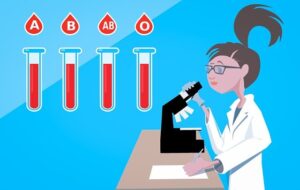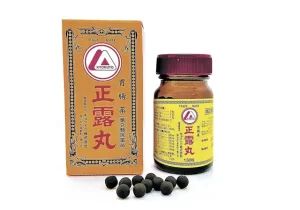Nanomedicine to fight cancer: tiny particles with great potential!
- Gut Bacteria Enzymes Offer Hope for ABO Universal Blood Transfusions
- Well-Known Japanese Medicine Exposed for 30 Years of Data Falsification
- Oregon Reverses Course: From Decriminalization to Recriminalization of Drug Possession
- Why Lecanemab’s Adoption Faces an Uphill Battle in US?
- Yogurt and High LDL Cholesterol: Can You Still Enjoy It?
- WHO Releases Global Influenza Vaccine Market Study in 2024
Nanomedicine to fight cancer: tiny particles with great potential!
Nanomedicine to fight cancer: tiny particles with great potential! Nanomaterials can be designed to have a two-way immunomodulatory effect.

Nanomedicine is an emerging research field that uses nanoparticles for drug delivery, diagnosis, and in vivo imaging (in vivo imaging of living animals).
Although anti-cancer nanomedicine sounds like science fiction, teams such as MD Anderson Cancer Center are studying it to see how it can be used to improve cancer treatment.
Recently, “Nature Nanotechnology” published a related article on nanomedicine. Dr. Betty King, associate professor of neurosurgery at MD Anderson Cancer Center, introduced the progress of nanomedicine and its potential use in cancer treatment.
▌What is nanomedicine?
Nanomedicine refers to the use of materials with sizes ranging from 1 to 100 nanometers, aiming to specifically target target tumor cells or immune cells. It can also have multiplexing capabilities and can be used for imaging, diagnosis and treatment, and other applications.
Researchers are exploring the application of nanomedicine in immunotherapy.
▌The application prospect of nanomedicine in immunotherapy?
The use of nanomedicine for immunotherapy is actually a new field. It is another frontier direction in drug design.
Traditional systemic cancer treatment is based on chemotherapy, and its goal is to use drugs as much as possible to kill cancer cells. However, these drugs do not distinguish between enemy and ourselves. The human body will receive large doses of cytotoxic drugs, which can cause side effects such as hair loss, diarrhea, and nausea.
However, nanomedicine provides a strategy to deliver anti-cancer or immunotherapy drugs in a more precise manner while avoiding healthy tissues. Therefore, we can minimize side effects.
Nanomaterials can be designed to have a two-way immunomodulatory effect. On the one hand, it can activate the immune system, such as when used to fight cancer; on the other hand, it can also suppress the immune system, such as in response to potential risks of autoimmune reactions.
We might as well imagine nanomaterials as a set of “Lego bricks.” You can choose individual parts to build complex devices that can perform specific tasks. Nano engineering is similar: you first choose the original material, which can be lipid or polymer, and use it to design drugs in a certain way to achieve functions such as activating immune cells.
The key variables affecting immune nanomedicine research include: microbiota, gender, age, environment, immunotherapy and toxicity. These variables are very important when designing relevant clinical trials.
In the past 20 years, nanomedicine has caused a lot of controversy, and there have not been many breakthroughs in the field of immune nanomedicine. The development of these nanomaterials is very complicated in itself. Today, the application of immunotherapy has greatly changed the way to treat cancer and further increased the complexity of nanomedicine applications.
Because it targets immune cells, it is necessary to better understand the patient’s situation. In immunotherapy, microbiota, gender, age, environment, and physical conditions will all affect the immune system, thereby affecting the efficacy and toxicity of immunotherapy. Therefore, these factors need to be fully considered when designing clinical trials.
▌What are the major successes in the field of nanomedicine?
Moderna and Pfizer’s mRNA new coronavirus vaccines use lipid nanoparticles to combat the new coronavirus.
These two vaccines synthesize the gene sequence encoding a specific antigen protein (S protein) in vitro, and inject the mRNA encoding the antigen protein directly into the human body, allowing it to express the virus S protein in the cell, and the human immune system can recognize and use these Protein to form immune memory and exert immune protection. It is equivalent to drawing a “wanted portrait” of the COVID-19 virus, letting immune cells search for it, and kill it if it is found.
However, when the vaccine is injected into the body, the mRNA itself will be rapidly degraded by the body’s nuclease, and it will not be able to achieve the desired goal by itself. In this case, a suitable transportation tool is required.
At this time, it is nanotechnology’s turn to show its talents: mRNA is wrapped in lipid nanoparticles to protect it from nuclease degradation, so that it can be accurately delivered to designated target organs and tissues.
▌What research does MD Anderson have in the field of nanomedicine?
In the past immunotherapy, we injected immunotherapeutic drugs into the body, and presupposed that it would reach the tissue in some way, and then bind to tumor cells there. This is passive. MD Anderson is working to develop an “active” compound using nanomaterials.
Recently, the research team is developing a system called a “combiner”. The system uses two components wrapped in nanoparticles for delivery, which can achieve a double blow to tumors: antibodies against the HER2 receptor and calreticulin molecules that interact with immune cells (which can expose tumor cells).
Essentially, nanoparticles are designed to be like Scud missiles: antibodies use nanoparticles to find cancer cells, calreticulin molecules bind to macrophages in the immune system, and phagocytes are responsible for destroying tumors. After macrophages engulf cancer cells and cut them into small pieces, these cancer cell pieces appear on the surface of the macrophages. Then, T cells recognize these cancer cell fragments (called peptides) and reprogram them to attack other cancer cells. What is incredible is that some T cells become memory T cells, which means that it can also prevent the growth of other tumors of the same type.
The research team is currently working to extend this treatment concept to other molecules and cancers.
▌How will nanomedicine benefit cancer patients in the future?
For some very difficult cancers, such as malignant glioma and triple-negative breast cancer, patients have very limited treatment options. The research team hopes to change this status quo. In cancer, nanomedicine can be used as an adjuvant or drug carrier for therapeutic cancer vaccines to help anticancer drugs target tumors more effectively without affecting normal tissues, thereby improving the immune response to tumors.
(source:internet, reference only)
Disclaimer of medicaltrend.org



